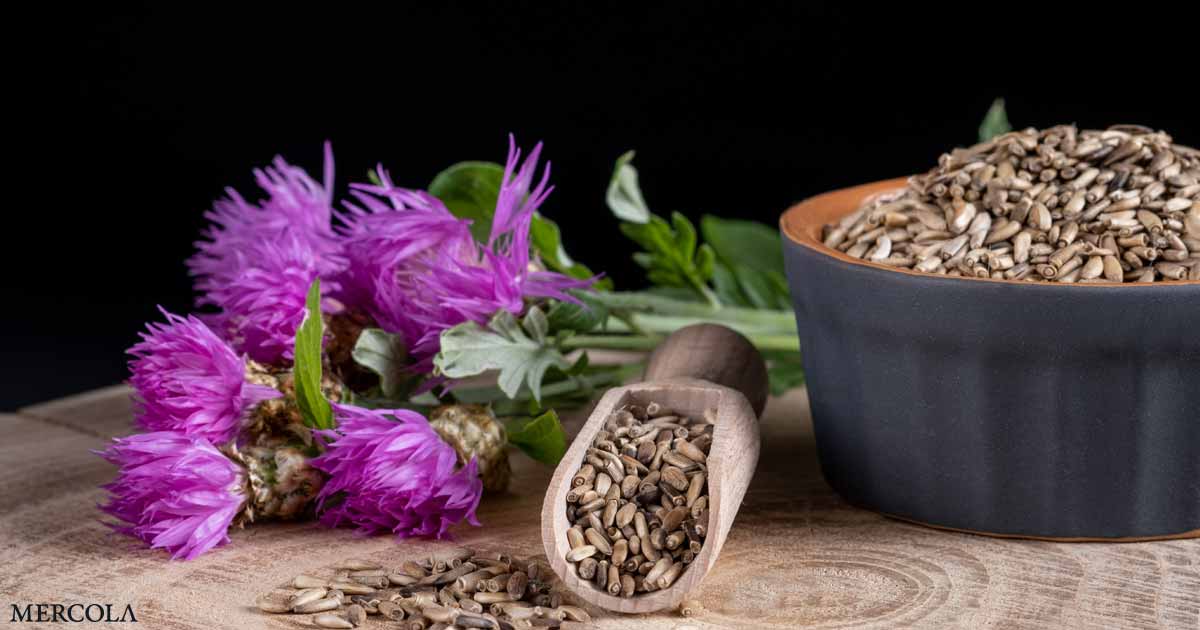
Milk thistle (Silybum marianum) — also known as Mary thistle and holy thistle — is a common flowering herb1 in the Asteraceae family. For many people, the plant is nothing more than an invasive weed. Yet, the herb possesses remarkable medicinal value. It has been used in traditional Chinese, European and Ayurvedic medicine for more than 2,000 years.2 It’s highly regarded for its anti-inflammatory, antioxidant and antiviral properties.
Some people consider planting it at home, but you must check with your local cooperative extension to ensure that it is not banned in your area. If you are allowed to plant it, be aware that milk thistle is highly invasive and can quickly spread throughout your and your neighbor’s yards.
A single flower head has nearly 200 seeds that can germinate in temperatures ranging from 32 to 86 degrees Fahrenheit. Once the plant is established, it’s difficult, if not impossible, to stop it from spreading. It is also crucial to note that milk thistle is toxic to livestock, so planting it near farms that raise cows or sheep is dangerous.
The medicinal properties of milk thistle are attributed to a chemical compound known as silymarin. These are a group of flavonoids that have several health benefits. Although all parts of the plant are edible, silymarin is only found in the seeds.
The herb was known for centuries as a liver tonic since the active ingredient has liver protective properties. Researchers theorized that the mechanism of silymarin’s active cellular protection is an adjustment of cell transporters, estrogenic and nuclear receptors. It’s also been found to inhibit apoptosis.3 Using a milk thistle supplement is not for everyone.4